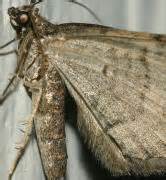Facts about Moths

Moths are apparently attracted to light, or more specifically, are known to circle bright objects.

People who study moths and butterflies are called lepidopterists; the study of moths is known as mothing.

Night-blooming flowers usually depend on moths (or bats) for pollination, and artificial lighting can draw moths away from the flowers, affecting the plant's ability to reproduce.

The division of lepidopterans into moths and butterflies is a popular, not a scientific distinction.

Moths and butterflies are often confused with each other, which is understandable, given that the division is a popular distinction, not based on principles of biological classification.

Butterflies can be considered to be a small group that arose from within the "moths."

Moths are important economically, offering both positive impact, such as producing silk, or negative impact, such as agricultural pests and clothing pests.

Sometimes the names "Rhopalocera" (butterflies) and "Heterocera" (moths) are used to formalize the popular distinction.

Moths, and more particularly their caterpillars, are a major agricultural pest in many parts of the world.

The harmony in nature can been seen in some species of moths serving as pollinators of night-blooming flowers.

Hsiao (1972) suggests that the reason for moths circling lights may have to do with a visual distortion called a Mach band.

Moths are sturdy and usually are more resistant to pesticides than mosquitoes and flies.